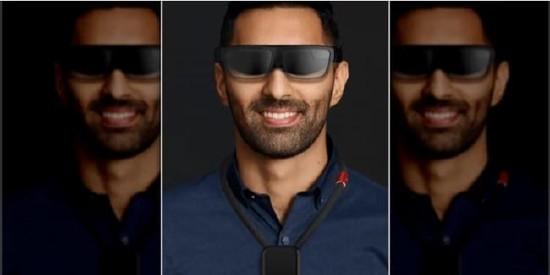Motorola and Verizon jointly launched a 5G neck-worn VR for the XR market on February 14, designed to alleviate the weight problems caused by the large number of components of mainstream XR headsets. According to calculations, this neck-mounted computing component is mainly used to provide high-bandwidth and low-latency networking, computing and power support for AR/VR headsets, thereby helping manufacturers achieve lightweight shape parameter design.
The neckband device innovation comes from the Motorola 312 Labs R&D, which was founded in 2021, and can be paired with Lenovo's ThinkReality A3 headset, while also supporting other models of VR and AR headsets, powered by the Qualcomm Snapdragon 8 Gen 1 neck-mounted computing component via Verizon's 5G Ultra Wideband network and mobile edge computing platform.

It is reported that the front pendant of this 5G neck-worn VR measures 2.1 x 3.8 inches, weighs 100 grams, and has a built-in Snapdragon 8 Gen 1 processor, 5000mAh battery, touchpad, SIM card slot and charging indicator. It also integrates a range of sensors such as gyroscopes, accelerometers, barometers and GPS, while the 5G antenna is embedded in other parts of the neckband. On the back of the neckband is a 75-gram trapezoidal module that also contains an antenna and stereo speakers. According to company representatives, coaxial cables and signal lines connect the two.
It is worth mentioning that this 5G neck-worn VR has been approved by the US FCC, but it is not clear the specific parameters and operating effects of the device, as well as the heating situation. Motorola said it will further share the relevant research and development results in the coming months.
Jeff Snow, general manager of Motorola's product innovation division, said. "We want to be able to provide users with an alternative smartphone experience, a new device that can stay connected to smart glasses for a long time. Through this partnership, we are further strengthening our partnership with Verizon and are able to work together to solve new challenges in the industry and advance consumer and enterprise AR use cases." ”
Verizon added: "Motorola's wearable neck and ultra-lightweight AR smart glasses leverage Verizon's 5G Ultra Wideband network and mobile edge computing platform, which allows us to deliver immersive technology in a wide range of areas." ”
Motorola and Verizon have yet to share details about pricing and availability of 5G neck-mounted VR, but said they are in talks with key partners. Brian Mecum, Vice President of Technology at Verizon, revealed that the partners include "retail channels that already do business in AR and VR" and "some sports leagues", and will also have "big moves in the field of education" in the future.